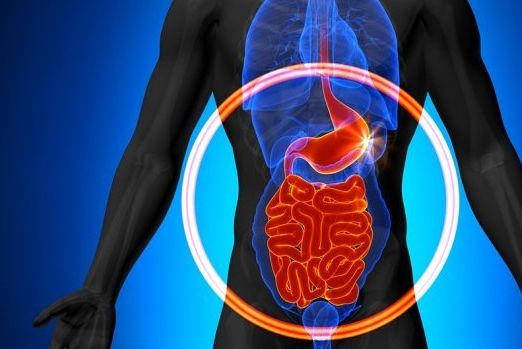Lactose intolerance occurs when the body cannot properly digest lactose, a natural sugar in milk and dairy products. Lactose is broken down by the enzyme lactase. A lack of lactase in the body allows lactose to remain in the digestive system, where it ferments and produces gas. The production of lactase can vary, especially in children, and as such the severity of the intolerance varies as well. Symptoms generally appear 30 minutes to three hours after an individual consumes dairy products.
Bloating
Stress on the abdomen, such as that experienced during indigestion, creates bloating. A feeling of tightness or fullness usually accompanies abdominal swelling. In the case of lactose intolerance, the digestive malfunction involves the small intestine. As the undigested food passes eventually through the body, bloating will naturally decrease.
Grumbling Sounds in the Belly
Many individuals with lactose intolerance report that their stomachs grumble loudly after they consume dairy products. The movement of food, liquids, digestive juices, and air causes noises within the walls of the gastrointestinal tract. This symptom is usually accompanied by gas and bloating.
Abdominal Pain or Cramps
Indigestion and bloating often cause abdominal pain or cramps. After consuming milk or dairy products, people with lactose intolerance may feel mild discomfort in the GI tract, or in some cases even extreme pain. The symptom begins as little as 30 minutes following a meal and will gradually recede as the food moves through the body.
Flatulence
When the small intestine is unable to digest lactose, food particles pass to the large intestine either semi-digested or undigested. Gut bacteria ferment the undigested food, creating gas. This gas is naturally expelled from the body in the form of flatulence. Lactose intolerant individuals typically produce odorous gas, which can be uncomfortable and embarrassing.
Nausea
In individuals who are lactose intolerant, the dairy-containing food particles may rest in the gut without being digested. This urges the body to expel the food, making the affected person feel nauseous. Depending on the person, this can lead to vomiting or the nausea will pass in time.
Vomiting
Vomiting can accompany nausea. Some people with lactose intolerance feel more comfortable after vomiting, as the feeling of being too full and related abdominal discomfort subsides. Vomiting regularly can cause issues such as irritation to the lining of the digestive tract and dental damage. Vomiting also causes dehydration and loss of nutrients.
Abnormal Stool
Undigested lactose is not properly absorbed in the small intestine and passes to the colon. In many instances, this renders the individual’s stool loose and runny. Sometimes, this sign is misdiagnosed as infection-induced diarrhea, especially since abnormal stool may not be produced immediately following consumption. For instance, eating dairy products at night may produce an abnormal stool the next day.
Painful Bowel Movement
Lactose intolerance may cause painful bowel movements; if the event becomes frequent and forceful, the anal cavity will be irritated and sore. In rare instances, irritation to the anus can progress to the point where traces of blood and mucus appear in the stool. This symptom is most common to severely lactose intolerant individuals who have consumed a large amount of dairy, and in babies.
Weight Loss
Sometimes, lactose intolerance remains undiagnosed for years, either because the individual chooses to deal with the symptoms on her own, or a doctor misdiagnoses the condition as any number of illnesses that cause the same symptoms (such as IBS or Crohn’s disease). Recurrent bouts of indigestion may cause severe diarrhea, which may lead to weight loss. Prolonged nausea can also reduce appetite or make an individual unwilling to eat as much for fear of repercussions.
Fatigue
Many individuals feel uncharacteristically tired after experiencing symptoms related to lactose intolerance. As the body undergoes the physical stress of trying to digest undigestible compounds and battling signs and symptoms, energy levels are depleted.

 Home
Home Health
Health Diet & Nutrition
Diet & Nutrition Living Well
Living Well More
More




















